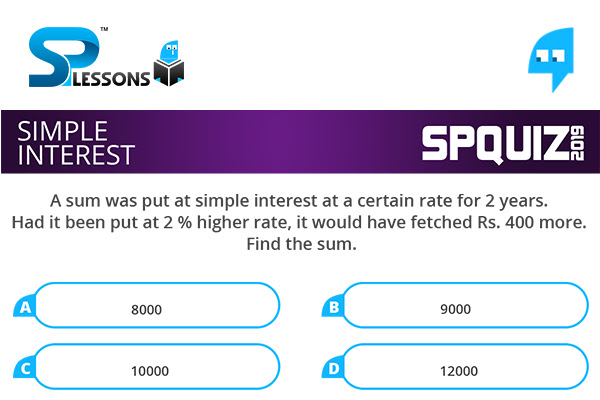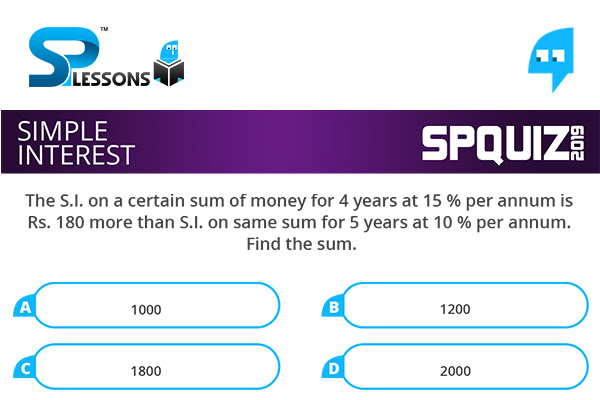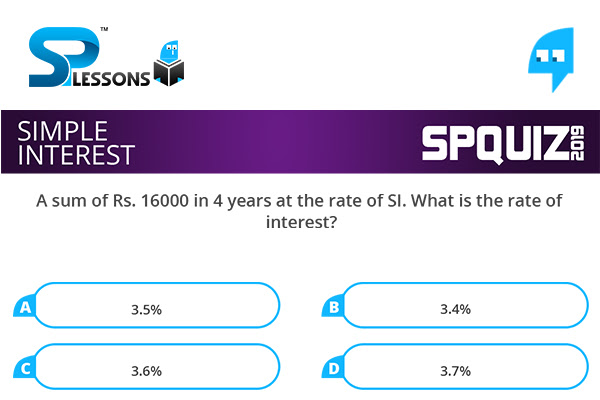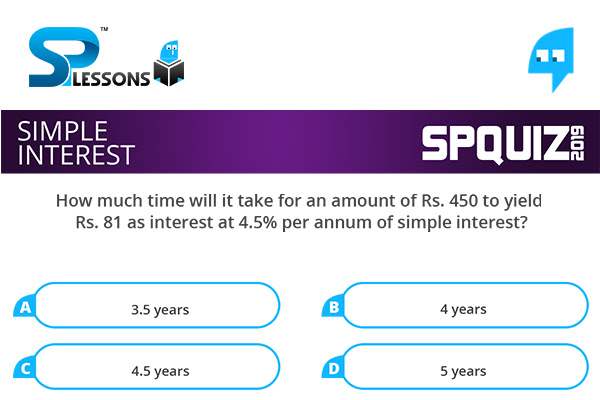 Introduction
Introduction
What is simple interest?
Simple interest is a quick and easy method of calculating the interest charge on a loan. Simple interest is determined by multiplying the daily interest rate by the principal by the number of days that elapse between payments.
Important Formulae :
1. Simple interest(S.I) = [latex]\frac{principal(P) \times rate(R) \times time(T)}{100}[/latex]
2. Principal(P) = [latex]\frac{100 \times Simple interest}{Rate \times time}[/latex]
3. Rate = [latex]\frac{100 \times Simple interest}{principal \times time}[/latex]
4. Time = [latex]\frac{100 \times Simple interest}{principal \times rate}[/latex]
5. Amount = Principal+ simple interest (or) Amount = P(1 + [latex]\frac{R \times T}{100} [/latex])
Simple Interest is one of important topic in Quantitative Aptitude Section. In Simple Interest Quiz 12 article candidates can find questions with answer. By solving this questions candidates can improve and maintain, speed, and accuracy in the exams. Simple Interest Quiz 12 questions are very useful for different exams such as IBPS PO, Clerk, SSC CGL, SBI PO, NIACL Assistant, NICL AO, IBPS SO, RRB, Railways, Civil Services etc.
 Q1
Q1
A sum of Rs. 12,000 amounts to Rs. 15,000 in 4 years at the rate of simple interest. Find the rate of interest.
- A. 6.25%
B. 4.25%
C. 5.9%
D. 5%
Therefore,
S.I. = Rs. 15000 – Rs. 12000
S.I. = Rs. 3000
Rate of Interest = [latex]\frac {(100 \times S.I)}{(P \times T)}[/latex]
[latex]\frac {(100 \times 3000)}{(12000 \times 4)}[/latex]
= 6.25 %
Rate of Interest = 6.25 %
 Q2
Q2
A sum was put at simple interest at a certain rate for 2 years. Had it been put at 2 % higher rate, it would have fetched Rs. 400 more. Find the sum.
- A. 8000
B. 9000
C. 10000
D. 12000
Let sum be x.
Original rate be R.
1st condition:
Rate of interest = R
Time = 2 years
2nd condition:
Rate of interest increased by 2 = (R + 2) %
Time = 2 years
Therefore,
[latex]\frac {[P × (R + 2) × 2]}{100} - \frac {(P × R × 2)}{100} = 400[/latex]
2PR + 4P - 2PR - = 40000
4P = 40000
P = Rs.10000
The required sum is Rs. 10,000
 Q3
Q3
The S.I. on a certain sum of money for 4 years at 15 % per annum is Rs. 180 more than S.I. on same sum for 5 years at 10 % per annum. Find the sum.
- A. 1000
B. 1200
C. 1800
D. 2000
Let the sum be P.
As the S.I. on sum of money P for 4 years at 15 % is Rs. 180 more than S.I. on same sum P for 5 years at 10 %.
[latex]\frac {(P × 15 × 4)}{100} - \frac {(P × 10 × 5)}{100} = 180[/latex]
[latex]\frac {6P}{10} - \frac {5P}{10} = 180[/latex]
P = Rs.1800
The required sum is Rs. 1800
 Q4
Q4
A sum of Rs. 16000 in 4 years at the rate of SI. What is the rate of interest?
- A. 3.5%
B. 3.4%
C. 3.6%
D. 3.7%
Here SI = 16000 - 14000 = 2000.
Rate of interest = [latex] 2000 \times \frac {2000 \times 100}{14000 \times 4}[/latex]
 Q5
Q5
How much time will it take for an amount of Rs. 450 to yield Rs. 81 as interest at 4.5% per annum of simple interest?
- A. 3.5 years
B. 4 years
C. 4.5 years
D. 5 years
Time = [latex]\frac {100 \times 81}{450 \times 4.5 }[/latex] years = 4 years








